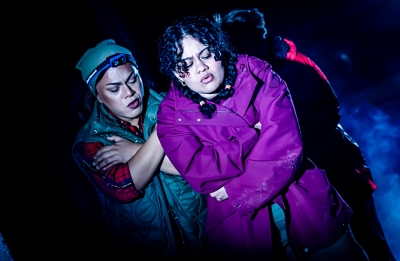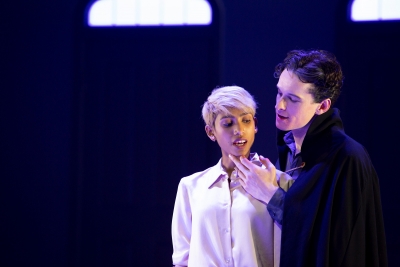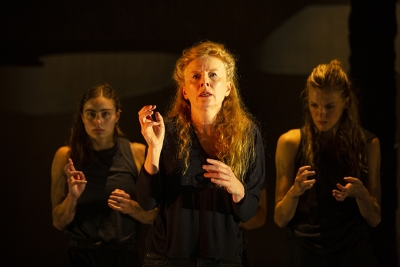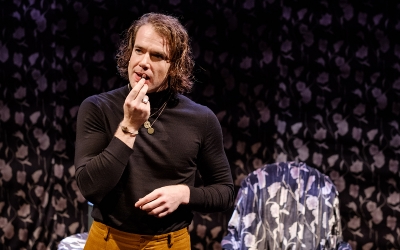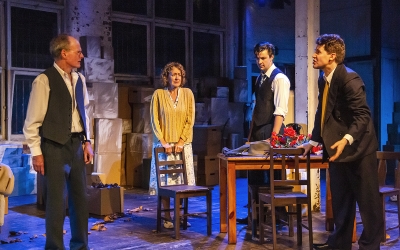Guy Webster
Somewhere on West 24th Street in the early 2000s, Susan Sontag asked Terry Castle whether Virginia Woolf was a ‘great genius’. Castle agreed emphatically before offering a tongue-in-cheek follow-up: ‘Do you really think Orlando is a work of genius?’ Sontag’s response was quick and admonishing. ‘“Of course not!.” she shouts, “You don’t judge a writer by her worst work! You judge her by her best work!”’
... (read more)This month Sydney is host to two productions inspired by Robert Louis Stevenson’s novella Strange Case of Dr Jekyll and Mr Hyde (1888). The first, from Sydney Theatre Company, signals director Kip Williams’s return to the Roslyn Packer Theatre following the success of his 2019 production, The Picture of Dorian Gray. The second, from director Hayden Tee, offers a subversive revival of the much-maligned 1990 ‘gothic thriller musical’ Jekyll and Hyde by Frank Wildhorn and Leslie Bricusse at Hayes Theatre Co. ‘Man is not one but two’, Stevenson famously writes ...
... (read more)Early on in Jonny Hawkins’s Maureen: Harbinger of Death, Maureen invites an audience member to light her cigarette. The man she chooses, like most audience participants, hesitates. She beckons him with a wry smile. As he wanders on stage, she immediately notices his bare face. She presents him with a mask – coordinated perfectly to the colour of her room and attire – and remarks: ‘He has a chin that could have sunk the Titanic.’
... (read more)Not long into Will Arbery’s Heroes of the Fourth Turning a character brings out an acoustic guitar and is asked to play a song. He chooses Townes Van Zandt’s ‘Nothin’’, a melancholy ballad pulled from the annals of American folk music. When it was released in 1971, many assumed it represented Van Zandt’s struggle with drug addiction. In fact, as he explained two years before his death, the song was inspired by Nikos Kazantzakis’s The Last Temptation of Christ, a novel banned by the Catholic Church in 1955 for representing a Christ figure prone to human fallibilities.
... (read more)Since its première in 1949, Arthur Miller’s Death of a Salesman has managed to cling to cultural relevance with a vice-like grip. In 1975, New York Times critic Walter Goodman saw in its evocation of the American middle class the perfect representation of a nation-wide recession following the Vietnam War. In 1984, the play’s titular salesman, Willy Loman, became the symbol of a dwindling middle class under Ronald Reagan. And in Mike Nichol’s 2012 Broadway revival, Charles Isherwood transformed Loman into the perfect everyman for the Great Recession. That same year, Simon Stone staged an innovative adaptation of Miller’s masterpiece for Sydney’s Belvoir Theatre. It was Stone’s decision to have his actors speak in Australian accents rather than the conventional Brooklyn dialect that seemed to pry the play from its American origins.
... (read more)While watching HBO’s newest whodunnit series, Mare of Easttown, I was reminded of another crime-fiction drama, The Sopranos (1999–2007). When Marianne ‘Mare’ Sheehan (Kate Winslet) arrives early for a court-ordered therapy session in the series’ fourth episode, I thought of Tony Soprano sitting down for the first of many similar appointments with his therapist, Dr Melfi. Reclining in a chair, Tony offered a lesson in obfuscation. While we knew he was lying when he told Dr Melfi that he worked as a ‘Waste Management Consultant’, there were still tantalising secrets which he withheld from us – secrets which we hoped to uncover as the series continued.
... (read more)
